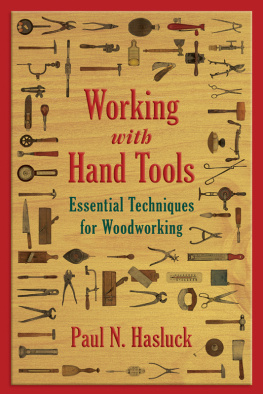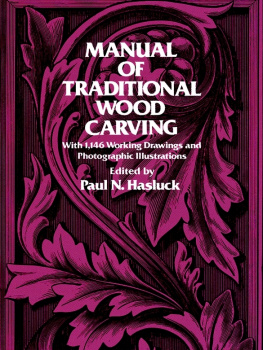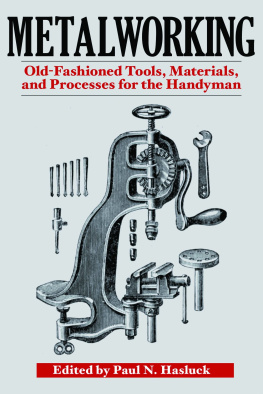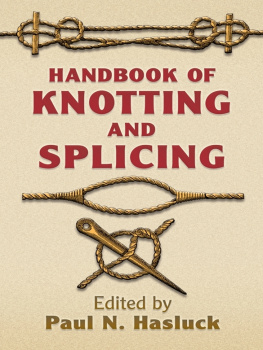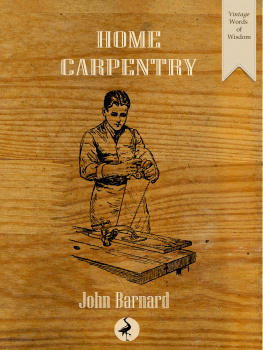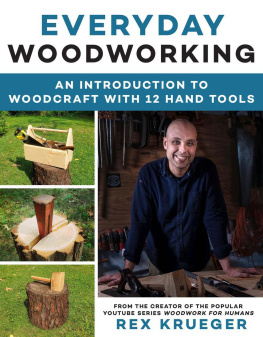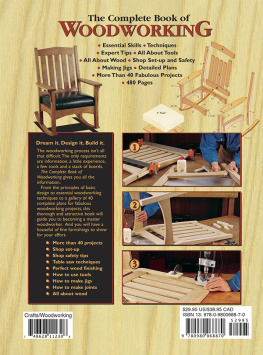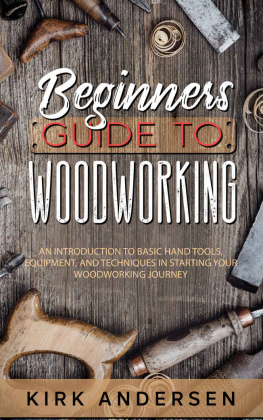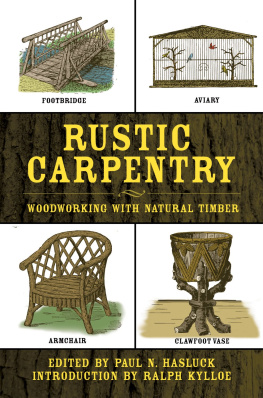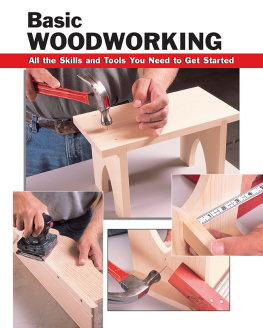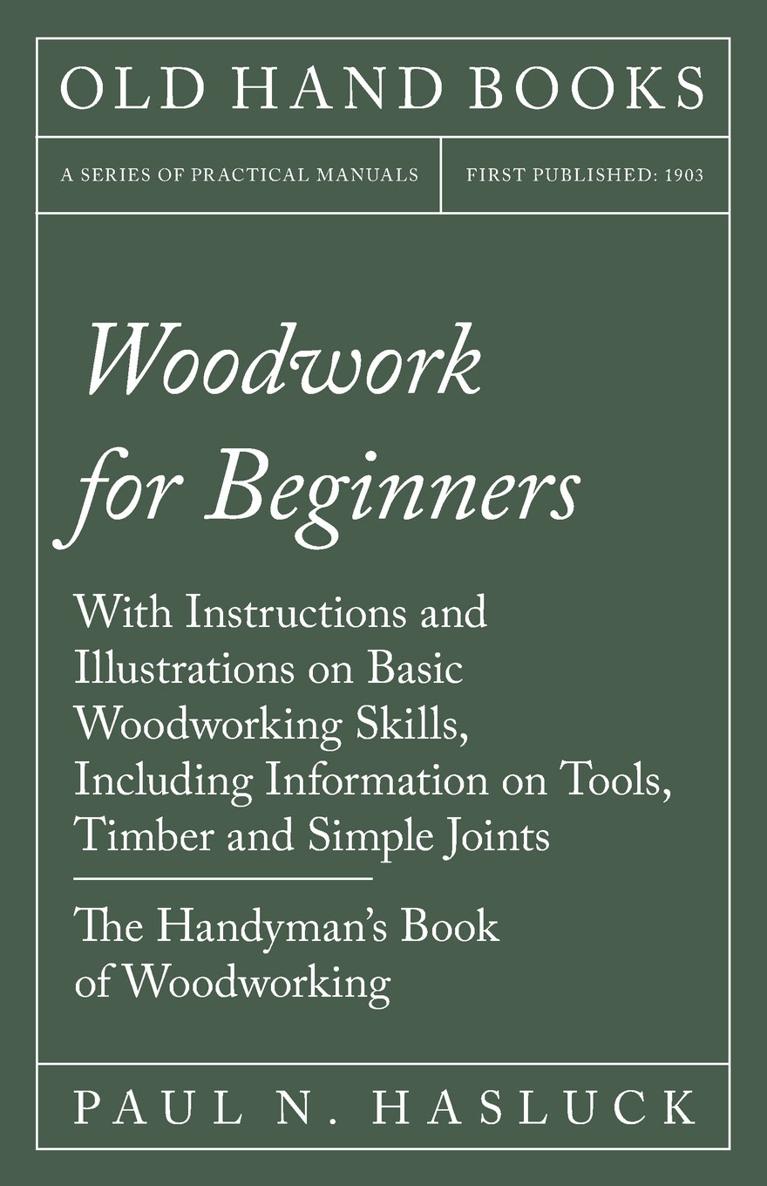The Handyman's Book of Woodworking
WOODWORK FOR BEGINNERS
WITH INSTRUCTIONS AND ILLUSTRATIONS
ON
BASIC WOODWORKING SKILLS,
INCLUDING INFORMATION ON TOOLS,
TIMBER AND SIMPLE JOINTS.
EDITED BY
PAUL N. HASLUCK
Copyright 2019 Old Hand Books
This edition is published by Old Hand Books, an imprint of Read Books Ltd.
This book is copyright and may not be reproduced or copied in any way without the express permission of the publisher in writing.
British Library Cataloguing-in-Publication Data
A catalogue record for this book is available from the British Library.
www.readandcobooks.co.uk
PAUL
Paul Nooncree Hasluck was born in April 1854, in South Australia. The third son of Lewis Hasluck, of Perth, the family moved to the UK when Hasluck was still young. He subsequently lived in Herne Bay (Kent), before moving to Victoria Street, London, later in life.
Hasluck was the secretary of the 'Institution of Sanitary Engineers' an organisation dedicated to promoting knowledge of, and development in the field of urban sanitation. Hasluck was also the editor of several magazines and volumes over his lifetime, including Work and Building He was an eminently knowledgeable and talented engineer, and wrote many practical books. These included such titles as; Lathe-Work: A Practical Treatise on the Tools employed in the Art of Turning (1881), The Watch-Jobber's Handy Book (1887), Screw-Threads, and Methods of Producing Them (1887), and an eight volume series on The Automobile as well as a staggering eighteen volumes of Mechanics
In his personal life, Hasluck married in 1883, to 'Florence' and the two enjoyed a happy marriage, though his wife unfortunately died young, in 1916. Hasluck himself died on 7th May, 1931, aged seventy-seven.
WOODWORKING
Woodworking is the process of making items from wood. Along with stone, mud and animal parts, wood was one of the first materials worked by early humans. There are incredibly early examples of woodwork, evidenced in Mousterian stone tools used by Neanderthal man, which demonstrate our affinity with the wooden medium. In fact, the very development of civilisation is linked to the advancement of increasingly greater degrees of skill in working with these materials.
Examples of Bronze Age wood-carving include tree trunks worked into coffins from northern Germany and Denmark and wooden folding-chairs. The site of Fellbach-Schmieden in Germany has provided fine examples of wooden animal statues from the Iron Age. Woodworking is depicted in many ancient Egyptian drawings, and a considerable amount of ancient Egyptian furniture (such as stools, chairs, tables, beds, chests) has been preserved in tombs. The inner coffins found in the tombs were also made of wood. The metal used by the Egyptians for woodworking tools was originally copper and eventually, after 2000 BC, bronze - as ironworking was unknown until much later. Historically, woodworkers relied upon the woods native to their region, until transportation and trade innovations made more exotic woods available to the craftsman.
Today, often as a contemporary artistic and 'craft' medium, wood is used both in traditional and modern styles; an excellent material for delicate as well as forceful artworks. Wood is used in forms of sculpture, trade, and decoration including chip carving, wood burning, and marquetry, offering a fascination, beauty, and complexity in the grain that often shows even when the medium is painted. It is in some ways easier to shape than harder substances, but an artist or craftsman must develop specific skills to carve it properly. 'Wood carving' is really an entire genre itself, and involves cutting wood generally with a knife in one hand, or a chisel by two hands - or, with one hand on a chisel and one hand on a mallet. The phrase may also refer to the finished product, from individual sculptures to hand-worked mouldings composing part of a tracery.
The making of sculpture in wood has been extremely widely practiced but survives much less well than the other main materials such as stone and bronze, as it is vulnerable to decay, insect damage, and fire. It therefore forms an important hidden element in the arts and crafts history of many cultures. Outdoor wood sculptures do not last long in most parts of the world, so we have little idea how the totem pole tradition developed. Many of the most important sculptures of China and Japan in particular are in wood, and the great majority of African sculptures and that of Oceania also use this medium. There are various forms of carving which can be utilised; 'chip carving' (a style of carving in which knives or chisels are used to remove small chips of the material), 'relief carving' (where figures are carved in a flat panel of wood), 'Scandinavian flat-plane' (where figures are carved in large flat planes, created primarily using a carving knife - and rarely rounded or sanded afterwards) and 'whittling' (simply carving shapes using just a knife). Each of these techniques will need slightly varying tools, but broadly speaking, a specialised 'carving knife' is essential, alongside a 'gouge' (a tool with a curved cutting edge used in a variety of forms and sizes for carving hollows, rounds and sweeping curves), a 'chisel' and a 'coping saw' (a small saw, used to cut off chunks of wood at once).
Wood turning is another common form of woodworking, used to create wooden objects on a lathe. Woodturning differs from most other forms of woodworking in that the wood is moving while a stationary tool is used to cut and shape it. There are two distinct methods of turning wood: 'spindle turning' and 'bowl' or 'faceplate turning'. Their key difference is in the orientation of the wood grain, relative to the axis of the lathe. This variation in orientation changes the tools and techniques used. In spindle turning, the grain runs lengthways along the lathe bed, as if a log was mounted in the lathe. Grain is thus always perpendicular to the direction of rotation under the tool. In bowl turning, the grain runs at right angles to the axis, as if a plank were mounted across the chuck. When a bowl blank rotates, the angle that the grain makes with the cutting tool continually changes between the easy cuts of lengthways and downwards across the grain to two places per rotation where the tool is cutting across the grain and even upwards across it. This varying grain angle limits some of the tools that may be used and requires additional skill in order to cope with it.
The origin of woodturning dates to around 1300 BC when the Egyptians first developed a two-person lathe. One person would turn the wood with a rope while the other used a sharp tool to cut shapes in the wood. The Romans improved the Egyptian design with the addition of a turning bow. Early bow lathes were also developed and used in Germany, France and Britain. In the Middle Ages a pedal replaced hand-operated turning, freeing both the craftsman's hands to hold the woodturning tools. The pedal was usually connected to a pole, often a straight-grained sapling. The system today is called the 'spring pole' lathe. Alternatively, a two-person lathe, called a 'great lathe', allowed a piece to turn continuously (like today's power lathes). A master would cut the wood while an apprentice turned the crank.


